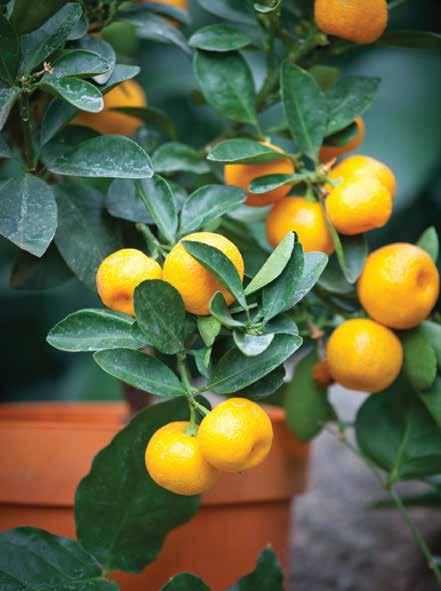Knotty Dioecious Native Plants Photo by Scott Woodbury.
R
Persimmons hood that could pollinate your female tree(s). Also, every so often a dioecious species will generate a perfect plant (perhaps a recessive gene). As you can imagine, this becomes an unrealistic guessing game, especially if you are seeking showy edible fruits for people or wildlife. One might think that seeds of dioecious plants produce equal numbers of male and female seedlings. Unfortunately, this is not always the case. Our Missouri ecotype winterberry (Ilex verticillata) and American holly (Ilex opaca) produce far more male seedlings then female seedlings. Too bad for gardeners looking for berry-producing Ilex trees and shrubs to feed the birds. The last batch of winterberry holly we sprouted at the Shaw Nature Reserve greenhouse produced 85% male plants, but it took five years for them to get big enough to confirm this. For American holly, seedlings volunteering in the Whitmire Wildflower Garden are mostly
SCOTT WOODBURY Horticulturist 14
December 2021 | kcgmag.com
American Holly, Ilex opaca engulfed in winter freeze. Photo by Scott Woodbury.
ose flowers are perfect. Perfect in the botanical sense— meaning that a flower has both male and female parts and produces seed. Same goes for most other native plants like coneflower, turtlehead, and blazing star. But there are many native species with imperfect flowers— meaning flowers that contain only male or only female reproductive parts. A number of native plants have imperfect flowers on the same plant, including grasses, sedges, walnuts, oaks, birch, and a number of other trees. Dioecious plant species are those with imperfect flowers on separate plants. Dioecious plants native to the lower Midwest include goatsbeard (Aruncus dioicus), wild strawberry (Fragaria virginiana), willow (Salix spp.), spicebush (Lindera benzoin), bittersweet (Celastrus scandens), eastern red cedar (Juniperus virginiana), fringe tree (Chionanthus virginicus), honey locust (Gleditsia triacanthos), and holly (Ilex spp.). With dioecious plants, you need at least one male and one female plant to produce fruits and seed. For farmers, gardeners, and birds who depend on berries produced by dioecious plants, this is important. Male plants will never produce fruits or seeds—so if you plant a single persimmon seedling in your yard, it is a roll of the dice as to whether it is female and will produce fruits. Even if you plant three, they may all turn out to be either male or female. Having three female persimmon trees doesn’t necessarily mean you will get yummy fruits either. You still need at least one male and one female in close proximity for success. There are exceptions, however. There may be a male persimmon growing nearby in your neighbor-
Linda Ellis offering education on this holly, Ilex decidua. male. Also, a majority of deciduous holly (Ilex decidua) plants scattered across Shaw Nature Reserve are also male. This does not bode well for homeowners who want bright red holly berries for wreathmaking and feeding birds. So how do consumers acquire female, berry-producing holly plants if most of the seedlings available are male? Fortunately, this species is prone to suckering, divides well, and can be grown from cuttings. At Shaw Nature
Reserve, we have been dividing female winterberry hollies to increase their numbers. We plant one male winterberry holly for every five females to get good pollination and fruit production. For deciduous and American hollies, we plant seedlings in nursery rows, and then wait until they flower and fruit. We then select the female plants for use in landscaping (remembering to use one male seedling for every five females). This process is time-consuming,
Horticulturist Scott Woodbury is the Curator of the Whitmore Wildflower Garden at Shaw Nature Reserve in Gray Summit, Missouri, where he has worked with native plant propagation, design, and education for 28 years. He also is an advisor to the Missouri Prairie Foundation’s Grow Native! program. Find suppliers of native plants and seeds at www.grownative.org, Resource Guide.






